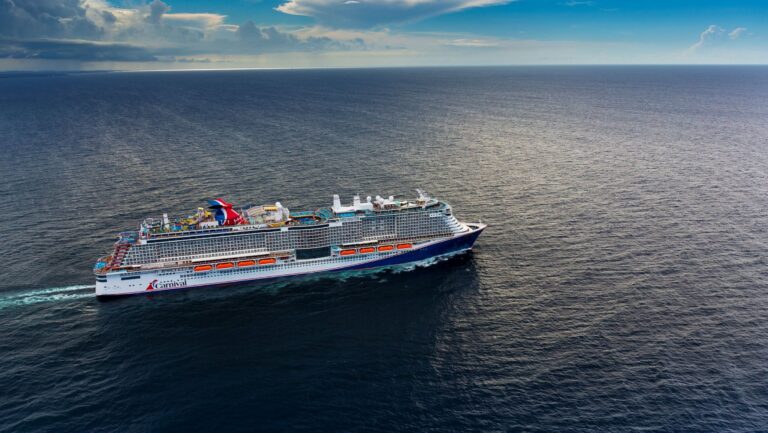- Wi-Fi is standard on most modern cruise ships, and its quality has improved significantly in recent years.
- Cruise cell phone service allows you to continue using your cell phone much like you would on land, with a few key differences.
- Travelers may have used a foreign SIM or eSIM – a card that allows mobile phone networks to identify its owner – to avoid roaming charges, as fewer mobile phones have physical SIM slots.
Get more stories like this by emailSign up for our travel newsletter here.
Last winter, I spent over a week on an Antarctic cruise, walking among penguins, watching whales, and sailing alongside icebergs. But one of the most amazing moments came when I uploaded an Instagram Story from the Aurora Expeditions ship, thanks to amazingly fast Wi-Fi.
Modern technology allows passengers to stay in touch in unexpected places. Some travelers take a cruise to escape their daily lives, while for others, staying in contact with people on land is essential.
But Wi-Fi isn’t the only way. Here’s what you need to know.
Does the cruise ship have Wi-Fi?
Wi-Fi is now standard on cruise ships, and its quality has improved significantly in recent years, whereas in the past the internet was often slow, disconnected or completely unavailable for users, according to Teresa Scalzitti, chief operating officer of Cruise Planners.
“It was like, ‘Let’s just walk around the ship and see where we can get good service.'” That began to change when many cruise lines started adding SpaceX’s Starlink to their ships.
Carnival Corp., which owns Carnival Cruise Line, Princess Cruises and Holland America Line, said in May that it had completed installation on all of its ships, and other companies such as Royal Caribbean Group have announced similar plans.
Wi-Fi typically comes in several tiers of packages.
For example, Carnival has three options.
◾ The Social Wi-Fi plan costs $15.30 per person per day and includes access to social media sites like Instagram and Facebook, as well as major airline websites.
◾ Value Wi-Fi plan offers faster speeds on the sites included in the Social plan, plus email and additional browsing for just $19.55.
◾ The Premium Wi-Fi plan is up to three times faster than other plans and gives users access to video chat, movie streaming, and more for just $21.25.
Norwegian Cruise Line, on the other hand, offers two options: an Unlimited Wi-Fi package that allows web browsing, email, and messaging on one device for $29.99 per day, and an Unlimited Premium Wi-Fi package that allows video and audio streaming for $39.99, with the option to add additional devices for an additional fee.
Scalzitti said whether to buy Wi-Fi is a “very personal decision” that depends on a traveler’s priorities. For example, Wi-Fi may be a must-have for those who plan to work remotely. Others may choose to turn it off during the trip and reconnect at port to save money.

Is cell phone service available on cruise ships?
Yes, believe it or not, cell phone service on cruise ships, like Wi-Fi, allows passengers to continue using their phones in much the same way they would on land, but with a few key differences.
WMS, a major provider, installs mobile phone networks on cruise ships. Its Cellular at Sea service works via a satellite connection, allowing users to make calls, browse the Internet, and send and receive messages, including SMS.
That makes it a better option for passengers who want to text between Android and iPhone, which will display green instead of blue. “This doesn’t work over Wi-Fi,” said Pramod Arora, president and CEO of WMS.
Travellers can also make calls using Wi-Fi calling on their mobile phones, but Arora said this is less secure and the quality is usually inferior to calls made via mobile phones.
The company has roaming deals with 400 mobile operators around the world, and can access it from 200 cruise ships across 25 cruise lines, where travelers’ devices will automatically connect to the network once the ship is far enough from land, as long as roaming is enabled and airplane mode is turned off.
Plan details and prices vary – for example, Verizon offers a $30 Cruise Daily Pass that includes 50 minutes of talk time, unlimited texts, and 0.5 GB of data per 24 hours ($1.99 per minute for excess), but the pass is only for on-board users, so you’ll be charged the rates applicable in the country you disembark.
Passengers can sign up for the service through their mobile phone carrier before or during their cruise, but it’s a good idea to research your options in advance.
Arora said guests might want to opt for Wi-Fi, especially if they plan to use their devices a lot for “data-centric” activities like watching YouTube videos or Netflix.

Can you work remotely from a cruise ship?It was like this
Can I use a foreign SIM or eSIM on my cruise?
To avoid roaming charges, travelers may be using overseas SIMs, which are cards that allow mobile phone networks to identify their owner, or eSIMs, as fewer phones have physical SIM slots. For users of carriers without roaming agreements, WMS offers a data-only eSIM option that can also be used on land.
That said, as mobile phone providers move to a more economical day-pass model for international connectivity, the cost differential may not be as great as it once was. “If you can get $10, $15, $20 a day from a national provider, then surely the eSIM providers have to pay that if they want to compete?” Arora said.
Nathan Diller is USA TODAY’s consumer travel writer based in Nashville. He can be reached at ndiller@usatoday.com.


